 The following interview was originally published in the Digimon Movie Book (2001). Translated by Twitter user @NohAcro. © 2017 Wave Motion Cannon
The following interview was originally published in the Digimon Movie Book (2001). Translated by Twitter user @NohAcro. © 2017 Wave Motion Cannon
Hey, it costs money to post translations like these! Any amount helps, even ¥300!
(Continued in Part 2)
At first, I wanted Digimon Adventure to take place in the 1960’s.
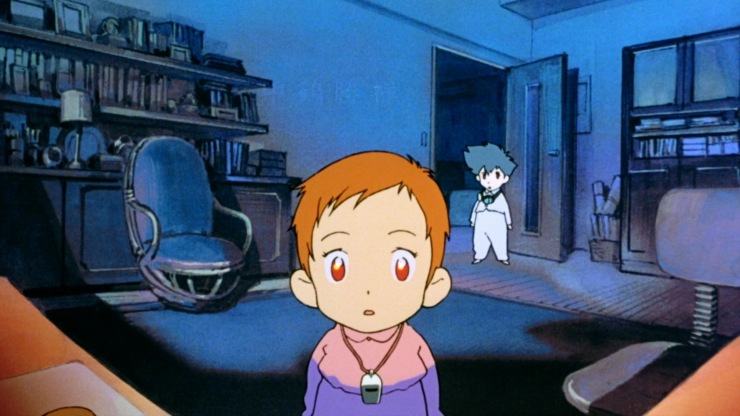
Can you first explain to us how the project Digimon Adventure started?
First of all, the movie Digimon Adventure was more like a standalone original film. At first it was only decided to make a theatrical film, and the TV show then followed. If I remember well, the movie started about a month and a half earlier than the series. That’s why when we were making the script, we had the constraint of making it as a standalone. It’s after the TV series was decided that we added Taichi’s first and last lines.
So at the beginning you were working without an introduction or a conclusion line, is that right?
Right, plus at that moment we only had the characters from Bandai’s Digital Monsters game to work with, and no one knew how to make a story out of that. Yet Katsuyoshi Nakatsuru-san, who was in the staff from the very beginning, had created some great and atypical character designs, something cool and a little bit retro, like in the 70’s comic books. They were really inspired and cool-looking, so we were using them as a starting point. But then a mixed media project with the V Jump emerged, and we had to merge the characters for both media. That’s how the current Taichi was born. Then the other problem was that we couldn’t set the film on the same timeline as the TV series (when they are 5th graders) without creating contradictions, that’s why we decided to set the story 4 years earlier.
I see.
Actually, we were first thinking about making Taichi’s father the protagonist, with a setting in the 30’s of the Showa era [the third decade of the era, i.e. ~1955 – 1965]. Since we could use the same character designs as the show without being redundant, it sounded like a good idea. The story would take place just when the Tokyo Olympics started, and we were thinking about a turning it into a comedy, where the characters make a complete mess in the whole city. The gap between the good old times and Digimon felt like a good touch as well. But when we brought the script to Toei’s head office, they firmly told us that we couldn’t do that (laugh). They basically told us to forget about the 30’s and instead make it more like a Kaiju movie. That’s how it became like it is. After that we had a midnight meeting in one of Toei’s meeting rooms with myself, the producer (Hiromi) Seki-san and screenwriter (Reiko) Yohsida-san, all of us saying that it’s impossible to make a Kaiju film in 20 minutes of screen time. After some discussion we thought that if we were making a Kaiju film, we should go all out and just show the fighting scene between monsters, the story only serving to meet and separate with the Digimon. Then we went on talking about how we needed to nail the excitement of Kaiju films by destroying some landmarks, but it wouldn’t be good for us to do it with something too sensitive. Then we thought “Toei’s headquarters are OK, right? Let’s destroy Toei Animation as well” (laugh), that kind of stuff. We were talking about that for some time, but after a while we came to the conclusion that this wasn’t a Kaiju film, but a story about children meeting Digimon, so we didn’t really need the excitement of destroying something. That’s how the story for the first film was decided.
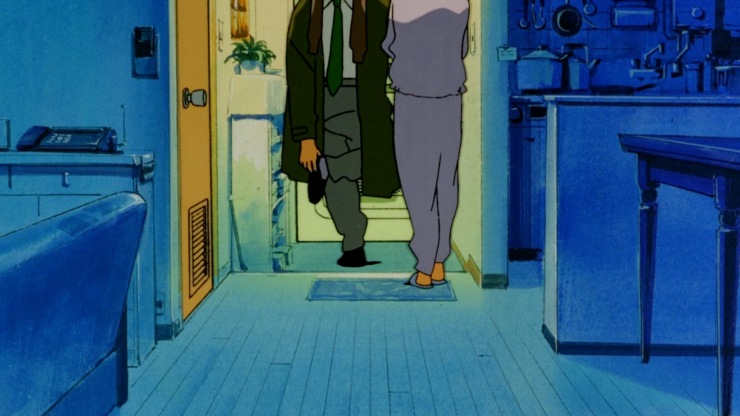
The first film takes place before the protagonist becomes friends with the Digimon.
At first the story was supposed to take place in downtown, so we wanted to do some location hunting in Kishimojin (Tokyo, Toshima district) and Tsukishima (Tokyo, Chuo district), but I changed my mind on the very day. I was intending to eat some monjayaki in downtown (laugh), but thinking about it, we couldn’t allow ourselves to go left and right within 20 minutes of screen time without making the movie messy. Then it’d be better for us to restrain locations. That’s the reason why I abandoned the monjayakis to visit Hikarigaoka’s apartment complex. By restricting the story to one location where everything would take place from beginning to end, I wanted to keep the image simple.
Where did the idea of the apartment complex come from?
Normally, a child would only be able to look up at a Kaiju, but by setting the action in an apartment complex, I could allow the audience to look over the action, like some sort of coliseum, or a ring where Kaijus would fight, and frame children as a part of the audience. I didn’t want to take the easy shortcut where the Digimon = kids’ friends. At this stage, I wanted to keep some tension about whether the Digimon is a friend or an enemy. After all the film takes place before the protagonist becomes friends with Digimon, with all that implies in both good and bad ways. If he just looks up at it, it would just seem like they’re friends. I’d rather frame it more objectively, in order to question what that Kaiju is for them. That’s why I also wanted a high angle shot to make that clear. I also wanted to only have children characters, to have that secretive sense of waking up at night, peeking outside, being the only one to see a monster walking, and feeling special about it. Taichi and Hikari are the protagonists, but the Digimon doesn’t belong to them, yet the other kids around would consider them special for being so close to it, and envy them…or at least that’s a possible point of view. For that reason I thought about an apartment complex as a setting where we didn’t need to replace the action and where there are lots of kids. So we suddenly decided to do location hunting at the closest complex from our workplace, at Hikarigaoka, canceling monjayaki at the same time.
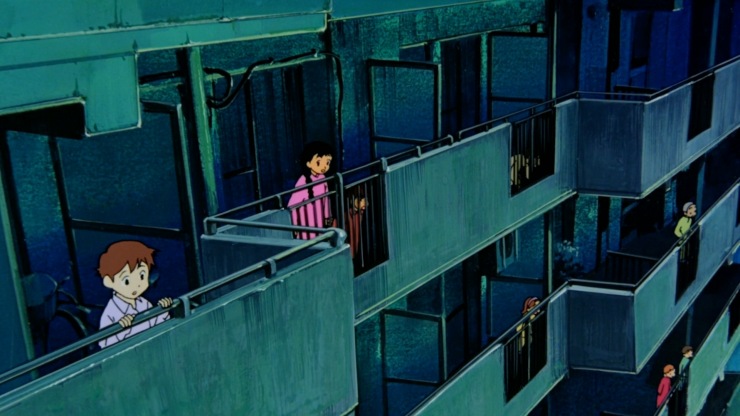
That kind of viewpoint is linked to the one of children playing the Digimon game, isn’t it? Like when they look to a screen. Plus the complex offers a setting for kids.
I don’t really like to create something incomplete. Part of me wants to create movies only with essential parts. That’s why we don’t even see the parents’ face. Their presence is necessary as a part of the story, but if I show their face, I would need to depict their characters as well, which is useless in this case, since the film is only about children encountering a Digimon. Besides, characters like Yamato or Sora weren’t in the first storyboards either. Seki-san proposed that by making Yamato or Takeru appear in the crowd looking at the battle, it would create a link with the TV series. Besides, Joe is live commenting the fight using his cellphone, but at this point he doesn’t know which one is friendly or not, it’s really out of excitement of seeing something special. He’s not even intending to support either of them. I remember telling the voice actor to make it sound like he’s watching a baseball game, not to act like if he had a preference for Greymon. To put it short, there isn’t any justice to this fight. It’s like in the animal kingdom, and the goal is to imagine what Digimon are while watching them fight. Not in terms of allies or enemies, but rather as a way to portray the appeal of nature and its world with an objective viewpoint.
I wanted the humans and Digimon to have equal weight.
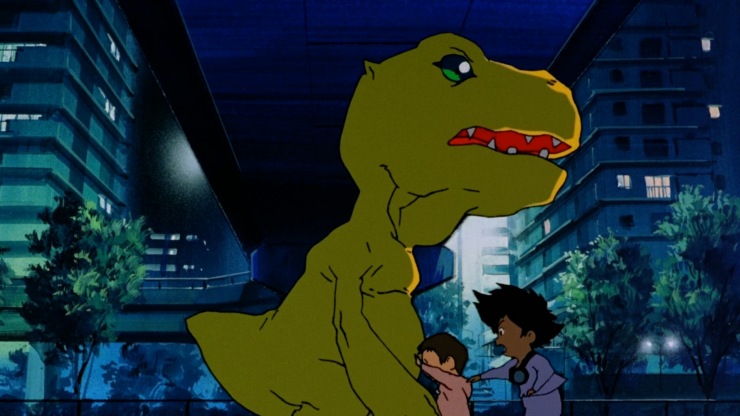
So were the two Digimon coming out of the Digital World a pure coincidence?
It is. It’s pretty much like if they ringed out of a breach in the Digital World and went on fighting.
So the fact that Koromon appeared in front of Taichi was a part of that process.
Indeed. Agumon is thrown in front of our protagonists by pure coincidence, so they approach him to see if he’s OK. After that they’re naturally inclined to encourage the one they talked to first. That’s their relationship. He’s certainly not an ally, but that doesn’t make him an enemy. If you or I went to Africa and saw a lion and an antelope fight, we would identify either of them as such, right? Thus even if it makes us think about nature’s harshness. They’re both living after all.
In that sense, the apartment complex is quite neat as a setting.
The fact that Agumon delivers the first blow has the same meaning, as for blurring the idea of good and evil. If Parrotmon attacked first, that would give a sense of justice to the fight. Instead it’s more like Agumon attacked as a self-preservation instinct. He’s also pushed after crossing trucks or helicopters, which appear as threats for the new-born Agumon.
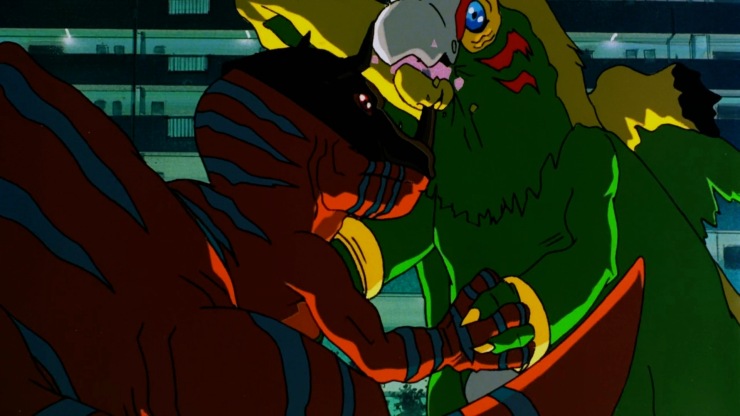
And he stops talking.
Right, that was also to show that Digimon are not one-dimensional in a short time span. Digimon evolve after all, so they necessarily show different facets. Regarding the first film, the idea at first was that Digimon wouldn’t talk, since it wasn’t decided whether or not they would speak in the show either. But then we added some lines to Koromon in the storyboards, so that when he evolves into Agumon and suddenly stops speaking, it would work as an axis of the story.
After all someone they were talking to and having fun with suddenly goes silent and starts shooting fire balls.
And when he evolves into Greymon, they even see the other side of that process. We start with Botamon who’s a completely unidentified life form, then Koromon, a sympathetic animal who talks and takes dumps. Then he suddenly becomes Agumon, with whom they cannot communicate anymore, and lastly with Greymon they recover some kind of friendly relationship, even if he may not be an ally. I wanted to show that kind of evolution, knowing that it’s the same entity. Or should I say that without, the fact that Digimon evolve wouldn’t serve any purpose. Since we need to show what Digimon are about in 20 minutes, we cannot make it a one-dimensional friendship. I thought I could add some depth to Digimon as characters by showing their different sides.
There’s the scene where Taichi tells Greymon about ‘The symbol of friendship’. Did Greymon intend to save him from the collapsing bridge at that moment?
You can see it that way. You can also see it as Taichi just being under him at the right moment. I didn’t want the Digimons’ will to be obvious. If we have a complete idea of their character from the beginning, that would be the end of the story. The Digimon would only be the protagonist’s companions. I didn’t want them to be pets, but rather beings who must be respected, and who have the same weight as humans. On the other hand, we had Taichi and Hikarau, two characters who start with two opposite viewpoints on Digimon: one accepting them and one rejecting them. I wanted to link that to the evolution in order to depict how we can see Digimon under different lights.
Taichi opened the gate to the Digital World by blowing the whistle.
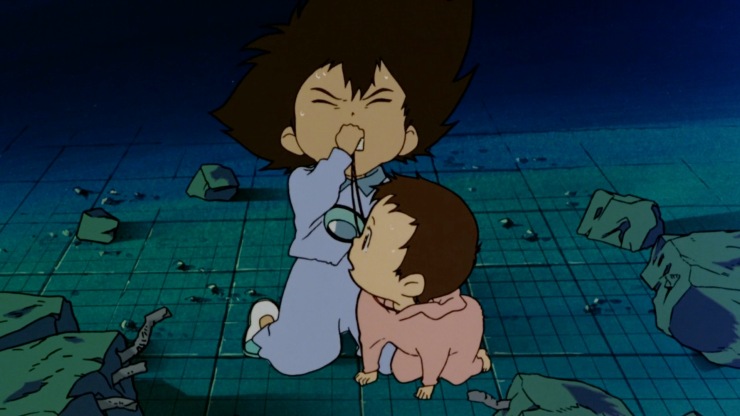
Hikari was friendly towards Digimon from the beginning.
Right. We discussed that during the scenario meeting. We were saying things like “Well, she’s quite a unique kid after all” when Nakatsuru-san gave us the first rough of the character’s design, and she already had a whistle. There was a little memo from Nakatsuru-san saying “I gave her a whistle, just like that,” and we were like “We’ll keep that!” (laugh). That gave us the idea of “A girl who half communicates with a whistle,” and thought about a structure where that tool would be used during the climax. What came to my mind was a film called The Spirit of the Beehive. At first glance it just looks like a pretty film narrating little anecdotes in the life of two sisters, but it’s actually about the conflict between them while they grow up. There’s Isabel, the elder sister who advances step by step on that path of growth, while the little sister Ana is somewhat reluctant about the idea of growing up. Hence in the film there are processes regarding growth that are disseminated all over the movie, but in a discrete manner. For instance there’s a scene where Isabel easily jumps over a camp fire while Ana cannot, or another where they both watch the movie Frankenstein, and Ana believes there could actually be a monster like that, while Isabel cuts the discussion by saying that it’s just a film. And that difference in the way they interpret Frankenstein is directly reflected in their lives from there…Isabel goes on growing up by negating all these fantasy worlds.
But that means Ana keeps believing that Frankenstein’s creature exists, right?
Right, she doesn’t want to listen to what her sister says, and she goes as far as to mistake a soldier who survived the Spanish Civil War for the creature. There is a clear difference in how they see the world. The contrast between the child who grows up and the one who doesn’t was quite interesting, so I wondered if I could create the same feeling with Taichi and Hikari. Hikrai, who accepts all is Ana and Taichi is Isabel. The one accepts the presence of a Digimon while the other remains suspicious. It’s because she was the kind of girl who communicates with a whistle that she didn’t mind the gap between herself and a Digimon. When Koromon sticks to her face saying “we’re friends,” she hugs him back, Taichi cannot do the same. He thinks about it, but his hands just freeze…things like that. There is that kind of hesitation. So when Koromon evolves into Agumon, he follows him only because he’s worried about Hikari. That’s the moment when they swap their feelings towards Digimon. Taichi, who couldn’t totally accept Digimon starts to look up to them, while Hikari starts to fear them. The symbol for that is Taichi taking Hikari’s whistle—her means to communicate with Digimon—and blowing it at the end. It may be a way to wake Greymon up, but for Taichi it’s also the moment when he fully accepts a totally different world he used to reject. I thought that if I could depict that kind of inversion, I could make this a “film,” even if it’s only 20 minutes long.
That whistle is important, indeed. It really serves to differentiate words and sound, the world of language and the world of senses to show different human traits.
Right, on one side there is the world of language, the one we all live in in our daily lives, and in contrast there is a world in which you cannot communicate with words. The question is how to communicate with that kind of world, and how to accept it.
So that difference appears slightly between the 7-year-old Taichi who just entered school and the 4 -year-old Hikari.
Exactly. So maybe the reason why they’re in this movie has less to do with preparing their appearance in the TV series, and more with depicting that difference in the way they see and relate to Digimon.
By blowing the whistle at the end, Taichi shifts slightly from the world of language to the world of senses…or at least he comes to terms with the idea. For a child of his age, it seems like those two worlds co-exist in equal proportions.
I think too. But on the other hand, Taichi also takes care of his sister by himself, so I think he’s really close to Isabel as a character, in the way that he’s already in the middle of his growth process; so it must be difficult for him to return to the non-linguistic world. Yet he can’t help but being amazed by the animal kingdom-esque power of Digimon fighting (laugh). He looks up to it without realizing. Hikari, on the other hand, cries because it doesn’t turn out like she expected. She had seen Agumon’s aggressive pulses all the way through, so I think she had to hit the brakes at the very end, to question whether she should accept those beings as they really are.
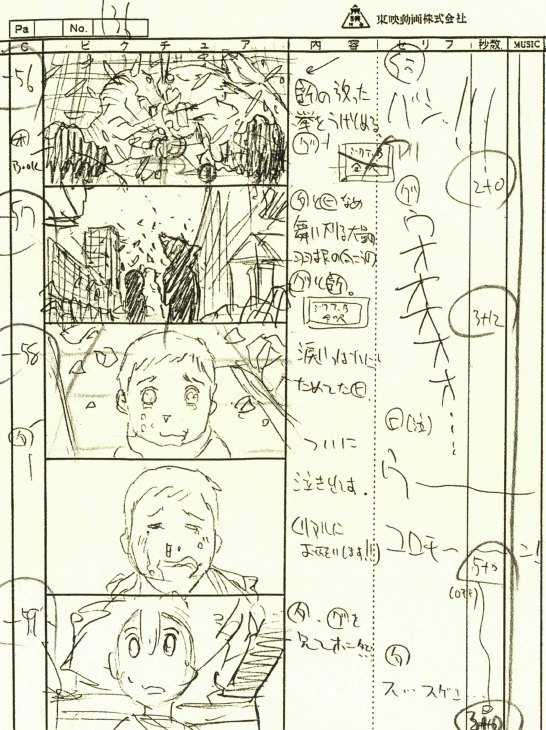
That’s why she calls Koromon’s name—this time with words—at the end.
And that sets up the fact that only Taichi was able to go to the Digital World after that incident. At least at that point in the timeline. It would be Taichi’s admiration for greater beings that opened the door to the Digital World.
Do you have interest for children?
More in growth as a theme than children themselves. I’m really interested in themes like growth or evolution, and children have this ability to change and learn immediately when something happens. Like an untapped land that can accept whatever comes at them, and that’s what makes for their great range of possibilities for evolution. Even for adults, that moment when there is a shift is always captivating, like when you change opinions, grow out of something you used to like or contrarily when you realize that you like something you were completely indifferent to until then. So it’s really more about evolution than children. Plus children tend to do that through experience and not logic, so it’s even more interesting…not because they don’t use logic, but because that logic doesn’t necessarily appear through words. This theme exists in the first film, which made it a little bit serious.
Even then, I think you nailed the entertainment side by using movement, like the kaiju battle or the chase scene between Miko and Koromon which are just fun to watch. I think the mix between those two aspects makes a neat balance.
From my perspective, since it was my first film, I think I didn’t have enough room to think about the audience’s entertainment. I was already too busy trying to consume all the concepts. When I watched the film with a watch in hand, I really was stressed to realize that at the point where Greymon appears, there’s only 4 minutes left (laugh). But even if we had 10 more minutes, I think I would have used them to depict Hikarigaoka’s atmosphere at night, so the amount of dialogue would have been the same. If you take My Neighbor Totoro for example, there are almost no lines that make sense, right? I think that’s one of its strength. After all the movie is about accepting the existence of Totoro, that being we don’t even know if it’s good or evil. I think movies that are “just” about that are both important and amazing.
The second film was supposed to be a road movie?!
When we compare it to the first one, it feels like the second film clearly embraces its value as entertainment.
Exactly, I was aiming for that from beginning to end. We had 40 minutes, so it’s twice as long as the first one, but it’s still half-assed as a movie, so we couldn’t make a great emotional story with that length, even if we wanted to, or it would end being as half-assed as the length itself. So instead I thought about a childish, simple story where you just have to enjoy the thrill.
So the first thing that was decided was the length?
I think so. When it comes to anime fare, it almost always starts by deciding the screen time. From there we think about of the content. This time we had two ideas from the start: the first one was something like Midnight Run with Robert De Niro, a story about a bounty hunter and his target who quarrel during their road trip and end up getting along. I wanted to do the same with Taichi and a new character, to build it like a road movie. That was plot 1. The second was simply “Hey, apparently the internet is popular right now” (laugh). Since the first one was a road movie, I thought the second one should be about the protagonist not setting foot outside. There was that movie called WarGames, so I thought we could go with that idea.
And that one was selected in the end?
Right. If the first idea had been selected, the plan would have been to set their last destination to Okinawa. We were saying that we could do some location hunting in Okinawa in that case (laugh). I feel like I’m only talking about location hunting (laugh). Anyway, I don’t know if they suspected that we would just play around if we went to Okinawa, but the final verdict was for the “WarGame” idea where the protagonist stays in his room. In exchange we would depict all the suspense inside the computer network. The year 2000 issue wasn’t really known at the time, so if we were making an If story where Digimon actually caused the issue, we thought kids could get a better grasp on the subject. Besides, since the first film was so serious, we wanted to make this one sillier. Like, the protagonists save the world without even setting a foot outside, that kind of silliness. We would add a countdown suspense like in Speed to it, so the rhythm would be the key point. We planned it so we could take advantage of the 40-minute screen time.
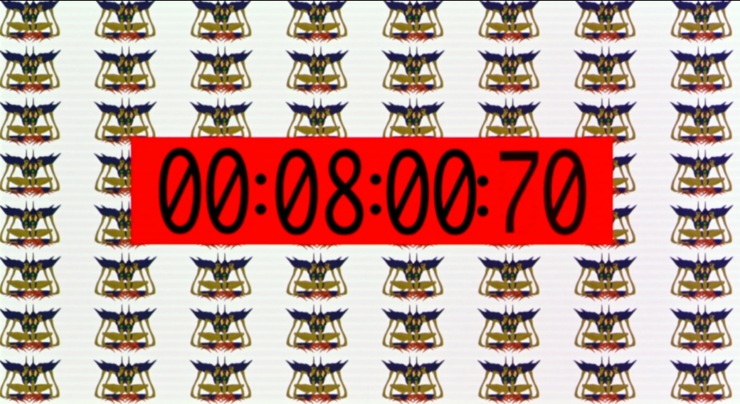
The last 10 minutes are actually in real time, aren’t they?
I think the total time is more or less the same as well. Even taking the editing into account, I think we’re in a 10-seconds range compared to real time. The film itself is 3 acts of about 10 minutes each. I personally think 20:20:10 minutes would have been better, but yeah…
And the year 2000 issue vanished completely during that process?
Exactly. I think it’s mentioned in the early versions of the scripts and the promotional material, but it was cut entirely for reasons of screen time, and I think it was the right decision. If we had mentioned the issue, it would have been about the year 2000 and only that. It would have lost its timelessness, the feeling that something like this could happen anytime.
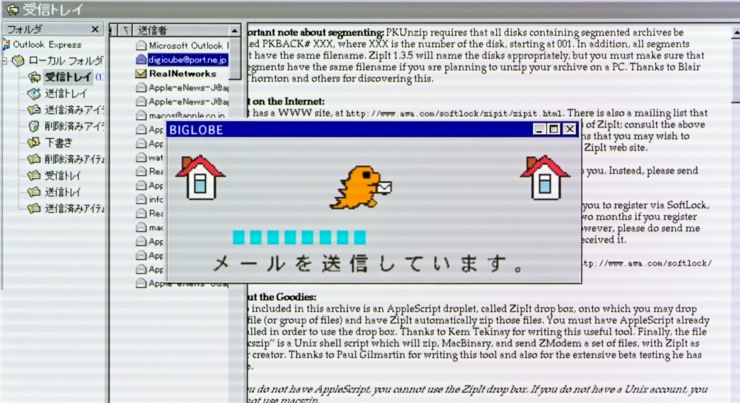
I was really surprised with the way computers were depicted. The Internet is really shown like a tool everyone uses.
Indeed. After all what I wanted to show was the same as in the first film: Digimon are just next to us, so is the Digital World. That’s why I didn’t represent it in an exaggerated fashion. When I’m dealing with Digimon, I still have the strong thought that Digimon aren’t something special.
I think that neat way you mix it with a sense of everyday life is the keypoint. Providers and OS are things that are used in real life as well.
If we start making up that kind of thing for the story’s purpose, I think the audience wouldn’t buy it. If we just say “This is special software, so it can do this or that,” it would only lower the suspense.
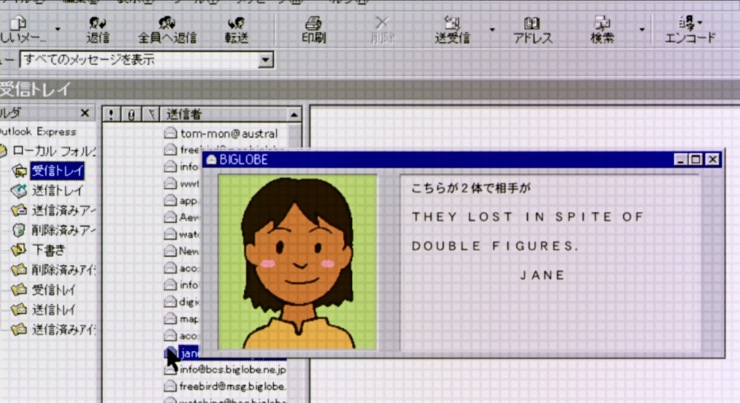
There’s also the fact that an e-mail sent in English passes through translation software. In any other film, it would just be in Japanese from the beginning with no explanation.
I could add that the film takes place from 11 AM to the beginning of the afternoon in Japanese time, so it’s the middle of the night for European countries. That’s why we don’t see many European kids, even if it’s hard to tell only by the pictures (laugh). There’s a line where they say “We got an e-mail from Berlin too,” but it’s 3 AM in Berlin, and we thought someone who’s awake at that time must be a delinquent kid, who’s sending it by using the line of a public phone in the subways.
Talking about kids, there’s something I wanted to ask, about the twins in Buenos Aires who appear at the beginning. We also see twins in the first film, is there significance to that?
The twins in the first film didn’t move to Buenos Aires or anything like that, I assure you (laugh). I clearly showed them as twins in the first, but this time the ones you mentioned are just siblings. Well, it’s actually not important (laugh). The twins are an homage to No Life King, which is also a story about children and the world of video games merging with the real world.
There are also twins in Kubrick’s Shining, in a shot where we suddenly see twins. It’s quite breathtaking on the moment.
I think that scene was inspired by a photography. It’s true that there’s something toxic, or at least frightening about these twins. No doubt that hit Kubrick’s sensibility. While we’re talking about him, I also drew inspiration from his second film, Dr. Strangelove, on the music aspect. If I’m not mistaken, they only use one track in Dr. Strangelove: When Johnny Comes Marching Home, a song from the Civil War, apparently. I thought about using that kind of emblematic track in the movie as a motif.
I let a “miracle” be the bridge across the wall between hearts.
We see adults living their everyday life in this movie.
Yeah, like asking their kids to help them bake a cake. It wasn’t Taichi’s mother’s intention to make Koutaro drink tea and go to the bathrooms by the way (laugh), but people’s ordinary generosity like this can be obstacles to the story. Same for Taichi, he could just ask Sora to send Piyomon as reinforcement, but he can’t because it’s a little bit awkward between them at the moment. It may sound silly but that constitutes an actual obstacle. They cannot just say “The world is in danger, so let’s be friends for now!” The same applies for Hikari, who considers that being with her friend at her birthday party is more important than dealing with a threat for the world. That kind of danger doesn’t necessarily occur when everyone is standing by. Danger is more likely to come during an “I’m a little busy right now” moment, and that’s part of the everyday life feel in the film. Taichi and Koutaro were just vacant at the right moment, and everyone else is either passing exams, in the countryside or in Hawaii, or pissed off because of Taichi. The fact that everyone cannot assemble in a dangerous situation is part of daily life, and also a part of the danger. The Net Digimon would certainly not have caused as much damage if everyone were standing by, since it was beaten up by the 8 of them (laugh). It wouldn’t be interesting to make it overpowered to the point where it can resist the entire team.
So it wouldn’t have worked with an enemy powerful enough to defeat all friendly Digimon.
The suspense is not on the Net Digimon’s strength, but rather on the lack of efficiency of the human side. When you think that way, our daily life is full of danger. On the other side, there are all the children in the world who detected the issue without any means to intervene, since they don’t have a partner Digimon. Those kids can be an obstacle at a time, or a power to reverse the game. Not a power of good will, but simple power. The protagonists just used that to their advantage.
Do you think they overcome it by wit?
I do. If I used some kind of trump card like in any other anime, it would only be seen as a “miracle.” They could instead draw power from a whole other resource, or take advantage of it. In that case, even a complex situation can be resolved with wit. However, I didn’t want the film to conclude with a “miracle”. It’s true that people tend to expect that from an entertainment piece like this, and there is satisfaction they can draw from it. But doing so would make the film lose its sense of reality. I could have used Koutaro as a Deux Ex Machina once again during the climax, but what I wanted to show is the importance of overcoming danger by simple means. On the other hand, people who expect a “miracle” in the film are gratified by being able to enter the Web, a “miracle” even Taichi couldn’t do.
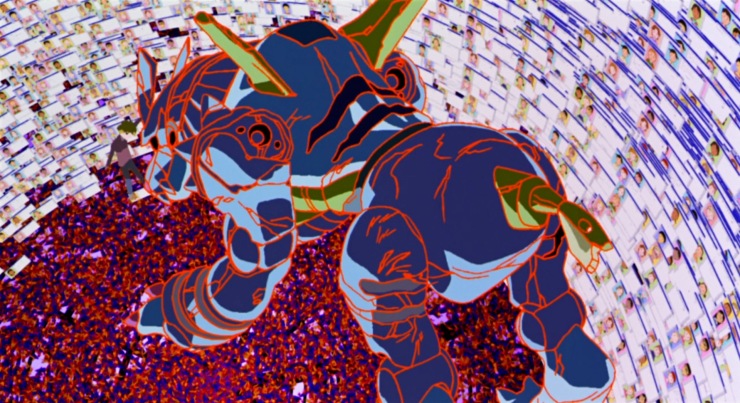
That scene really was emblematic.
Like I said, all the other obstacles in the film are quite specific and mundane. But this obstacle is a psychological one. After all, there was a boundary that couldn’t be crossed between Taichi and Digimon, not only physical, in terms of worlds, but…this also deals with a greater theme. Nowadays, there are lots of works showing monsters fighting each other, treating their victory as if it were the protagonists’. I think that’s because there is a psychological limit in fighting alongside allies. Yet you cannot feel actual friendship unless you go past that boundary. That’s the part I want to let “miracles” take care of. Not to resolve the plot conveniently, but to overcome real issues like this. Taichi and their friends don’t need to help their partner in the Digital World, but just be by their side. I wanted people to understand that’s the important thing. On the first glance, it looks like they triggered a “miracle” at that moment, but what they really overcame was that psychological limit. You can resolve concrete problems with efforts or wit, but those things cannot grant you friendship. And that’s definitely not something you can get by plotting on a means to get it. I wanted to question the relationship between the protagonists and Digimon, including that kind of subject. Digimon give their absolute confidence in Taichi and his friends, but how do they respond to it…? To me, Digimon are definitely not pets, but beings who are linked to their partners with some kind of bond and trust. And rather than taking that for granted, I thought that it could be a good idea to reaffirm that relationship through an incident. I guess it’s all about “not taking the generosity of a friend who takes you for granted.”
The fact that Sora receives the email at the end is quite symbolic.
I guess I was in that kind of mood, or else I wouldn’t have concluded the film like that. I think Taichi was doing his best to make up with her, and the fact that he accidentally added a heart emote to his message—which is completely out of character—that kind of silliness persuaded Sora to forgive him.
So we could even say that there are two “miracles” in this film, the first one being the inclusion of the heart emote.
Right, that’s why even if it looks like she’s not doing anything, Hikari has a quite amazing role in the film, since she’s the one who added the emote and sent the message without her brother’s consent (laugh).
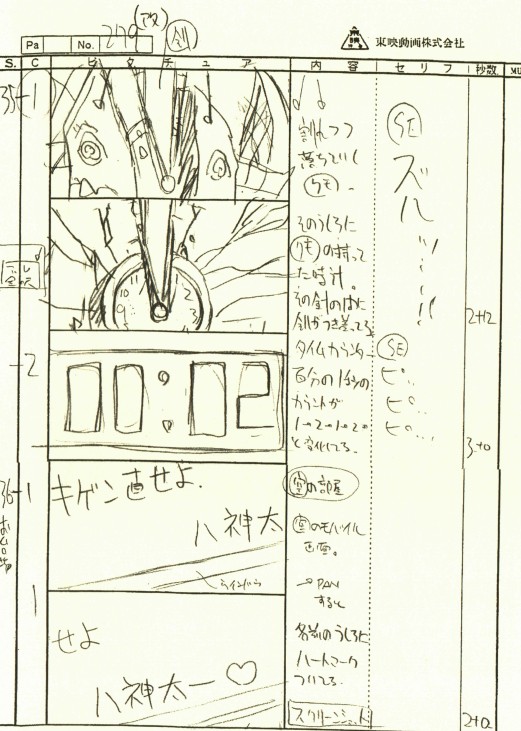
So as expected, she’s the one who triggers the miracle.
On the other hand, there’s Joe who doesn’t do anything. Or does he? After all he was late to his exams because of train delays, so he was facing the Net Digimon’s attack as well, in some way. Even if it looks like they are out of the plot, they’re actually involved. Mimi is the only one who isn’t, and that’s the reason why she’s in Hawaii. She’s just a witness, right between Japan and the US.
That’s amazing. Every character or thing is there for a reason.
I just didn’t want it to be a story only about protagonists. There are the chosen children, of course, but all the other children in the world are involved. It was also the case in the first film, but they are all witnesses of the battle, and this time they even get to actively participate in the form of email exchanges. That can be either an obstacle or a powerful tool for the protagonists. What that implies is: Digimon are not only there for chosen children, but for all children. That’s why we translated the title from “Bokura no War Game!” to “CHILDREN’S WAR GAME” in English. The protagonists are “Children.”
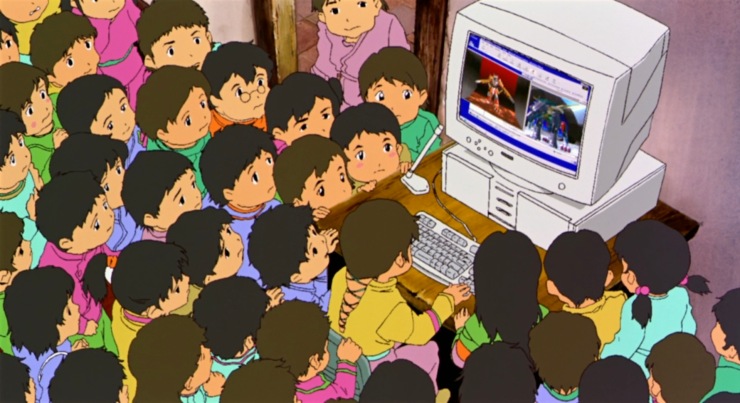
(Continued in Part 2)
Special thanks to @NAveryW for sending us the interview scans, and @Josh_Dunham for providing the storyboard drawings.
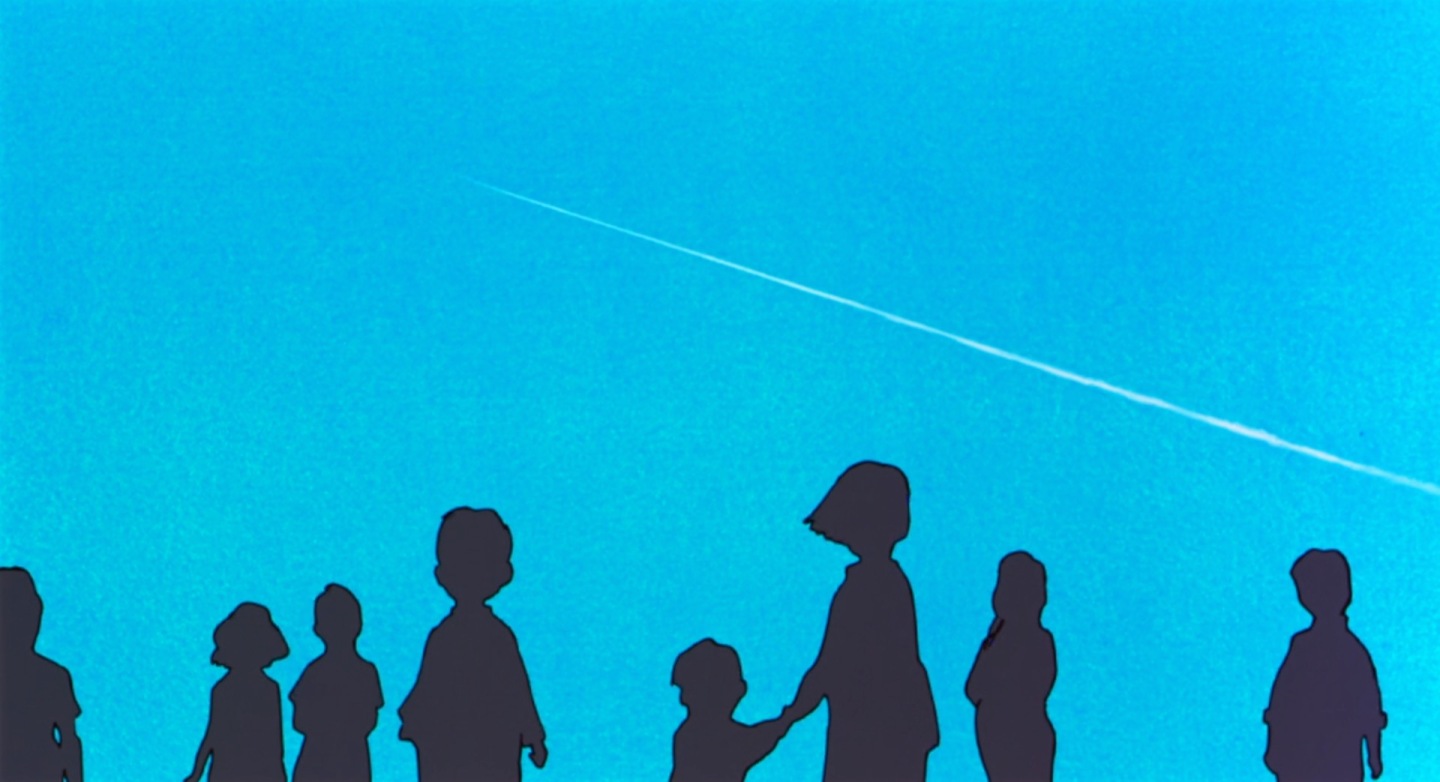













Nice! Could you pass me the page number from that interview please?
LikeLike
It’s on pages 111-119
LikeLike
Thanks
LikeLike